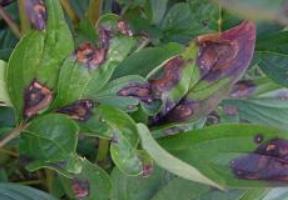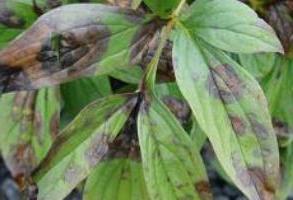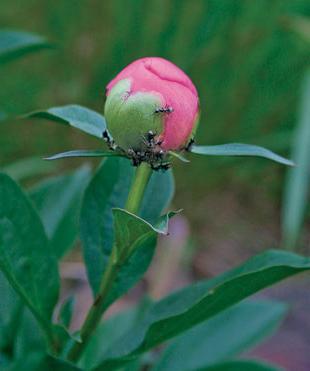Garden bacterial and fungal parasites: pion disease
There are few pests in pions, but here are diseases,striking foliage, stems, flowers and buds, many. Most often they are brought to the site together with planting material. In order to stop the developing disease of pions in time, it is necessary to regularly look at them in wet rainy weather. If necessary, spray the plant with fungicides. From time to time peonies are transplanted to a new site, previously dividing the bush in half. If you follow all the precautionary rules, then there will be no problems with flowers. But if all the same on the leaves and buds there were the first signs of bacterial or fungal damage, it is best to know what disease affected the plant and how to fight it.

The most common and, perhaps, maliciouspion disease is gray rot. It affects not only the buds, stems and leaves, but also the underground root part. Most often this fungal disease affects the period of regrowth of young shoots in the spring. The first sign of the defeat of the plant is the appearance at the base of the stalk of gray plaque. Then dark spots form in this place. The plant becomes very brittle, often the stems are bent and fall to the ground. Especially active gray rot develops into a rainy, cold, damp spring. The causative agent of this phytoinfection hibernates on plant remains. The disease causes significant damage throughout the growing season.


Another disease of pions is powdery mildew. It is also an infection of fungal origin. The affected area is the leaves. They form a plaque, under which the deciduous tissues first turn yellow, and then die off. To rid the plant of this pathogenic fungus, it is sprayed with a soap-copper compound. The solution consists of 20 g of copper sulfate, 150-200 g of green soap and 10 liters of water.









